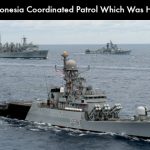India will join 25 other nations for the biennial military exercise – Rim of the Pacific (RIMPAC). The exercise will be held from June 27 to August 2 near Hawaii.
About RIMPAC
The exercises occur every two years and are led by the U.S. Navy’s Pacific Fleet. They are seen as a unique opportunity for Pacific Rim nations to cooperate as they train and work together to solve problems.
RIMPAC provides a unique training opportunity designed to foster and sustain cooperative relationships that are critical to ensuring the safety of sea lanes and security on the world’s interconnected oceans.
RIMPAC began in 1971 and was held annually until 1974, when it became a biennial exercise due to its large scale. The founding nations are the United States, Australia and Canada. This will be the 26th RIMPAC since inception.
RIMPAC 2018
RIMPAC 2018 contributes to the increased lethality, resiliency and agility needed by the joint and combined force to deter and defeat aggression by major powers across all domains and levels of conflict.
RIMPAC is known as the world’s largest international maritime exercise. This year, RIMPAC involves 47 surface ships, 5 submarines, 18 national land forces, and more than 200 aircraft and 25,000 personnel.
INS Sahyadri will sail from Malabar to participate and represent India in the multinational drill.
China Disinvited
China’s continued militarization of disputed features in the South China Sea only serve to raise tensions and destabilize the region. As an initial response to China’s continued militarization of the South China Sea, the US have disinvited the PLA Navy from the 2018 Rim of the Pacific (RIMPAC) Exercise.
Citing actions in the South China Sea that run counter to international norms and a pursuit of free and open seas, People’s Liberation Army Navy (PLAN) was not invited in the exercise despite its participation in submarine safety and other non-warfighting components of the exercise in previous years.
Conclusion
The war games are being seen as a way of ensuring open access to important shipping lanes in Asia’s increasingly contested waters. The exercises are also a display of power — in the sense that participants are able to understand the technological capabilities of other participants — and thus perhaps act as a deterrent to further aggressive action.













